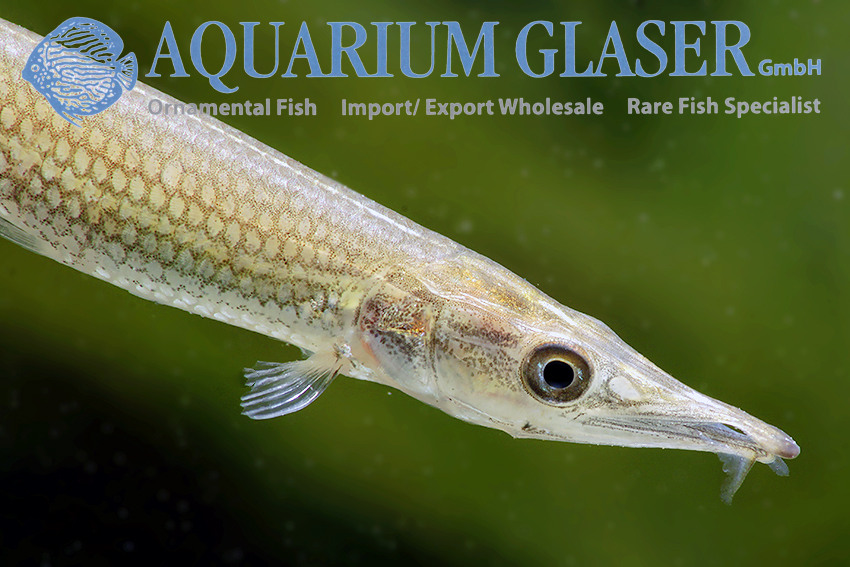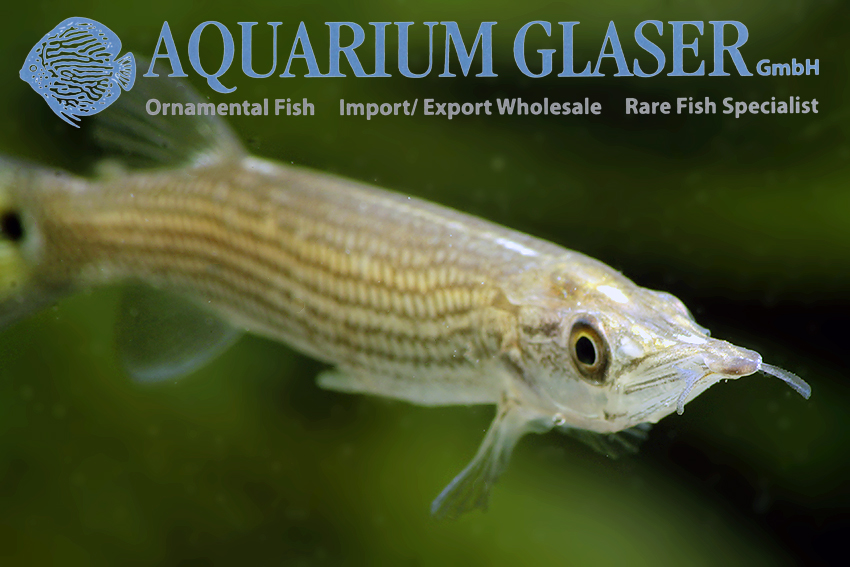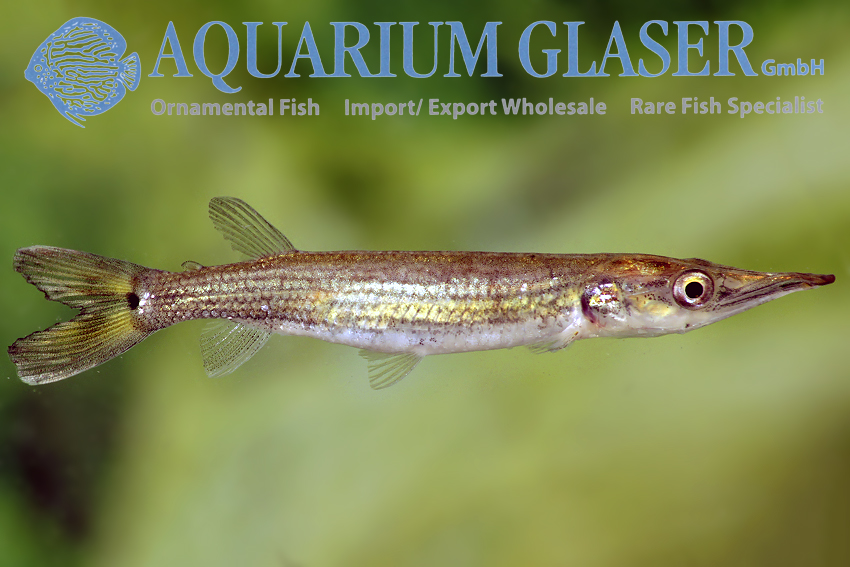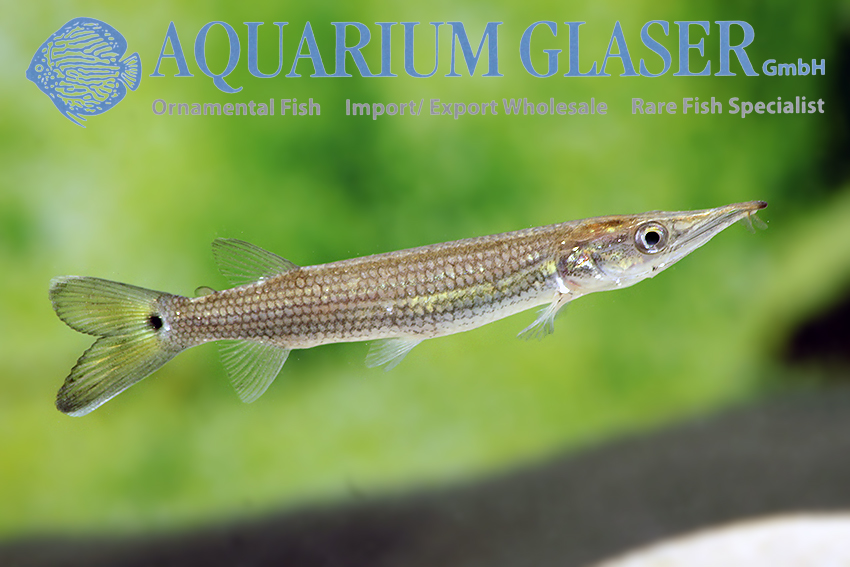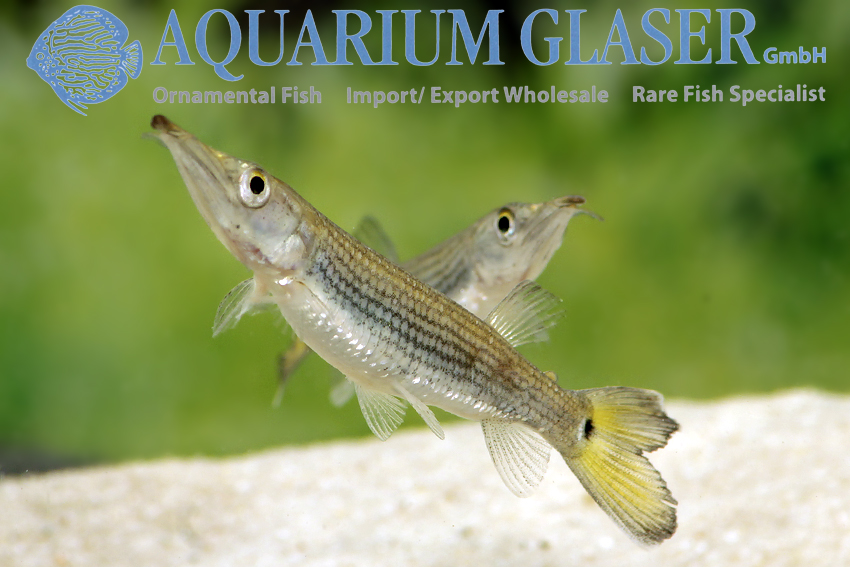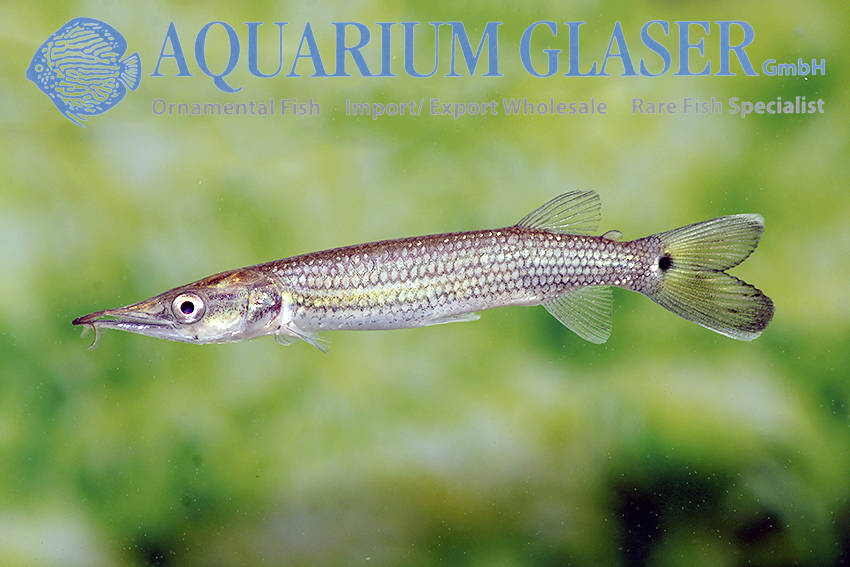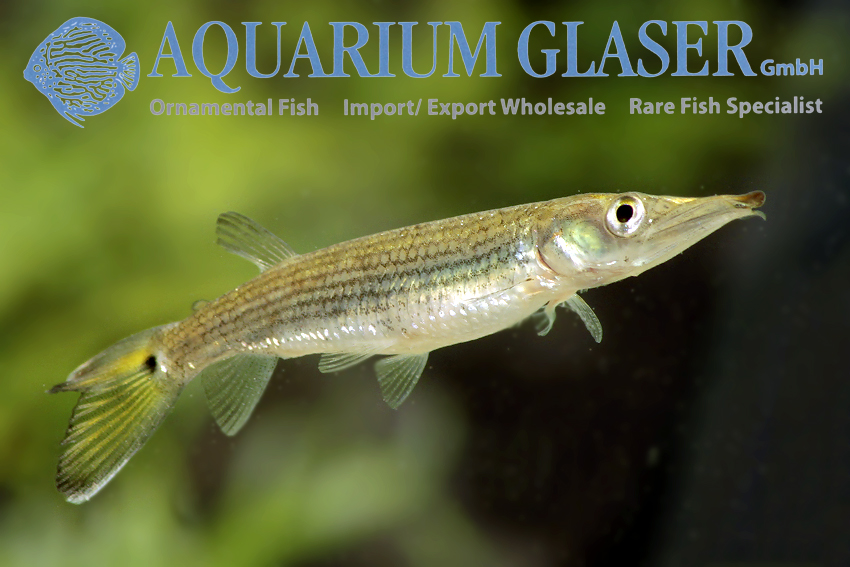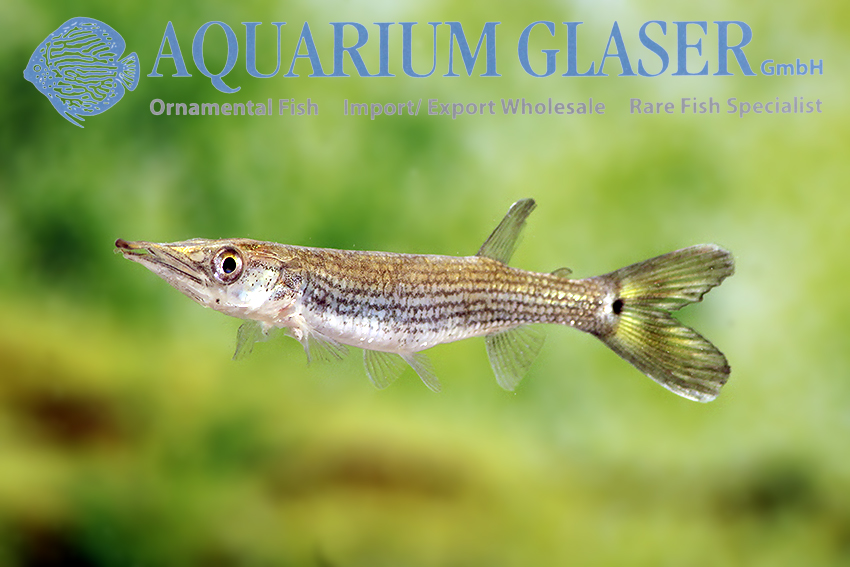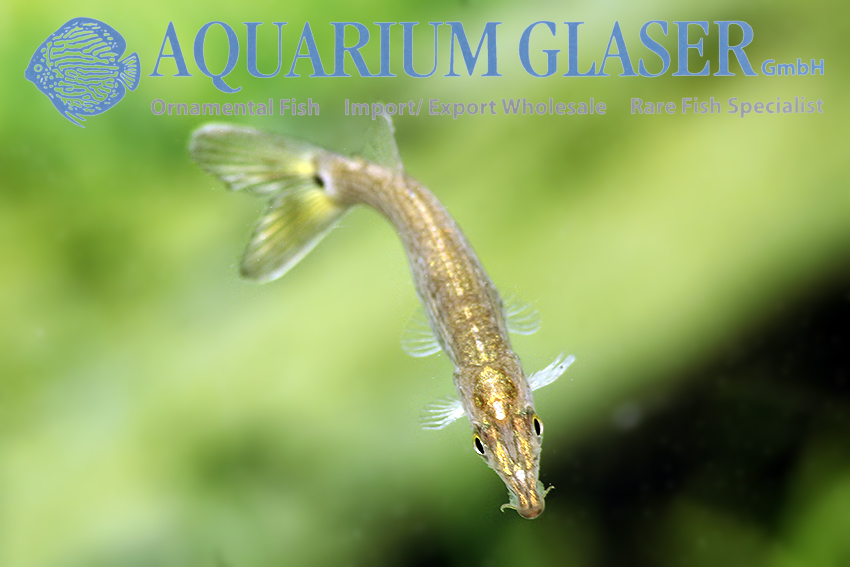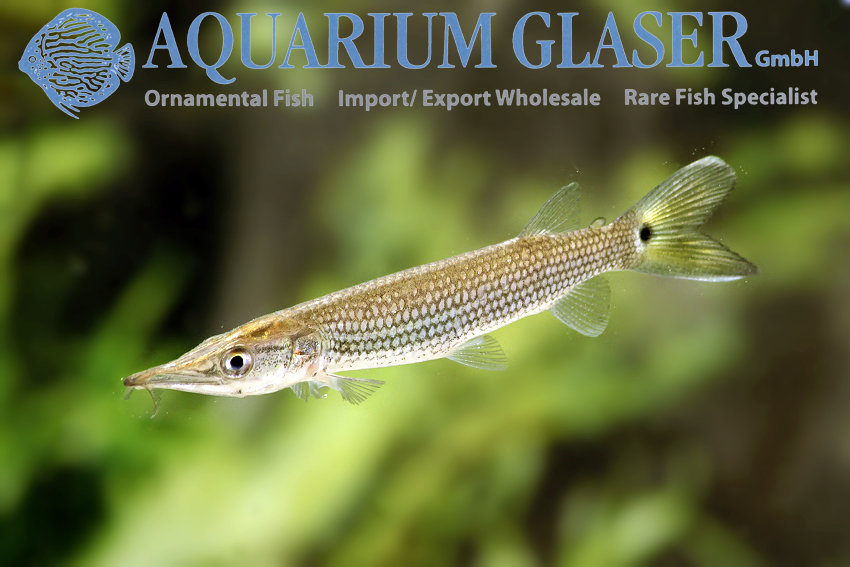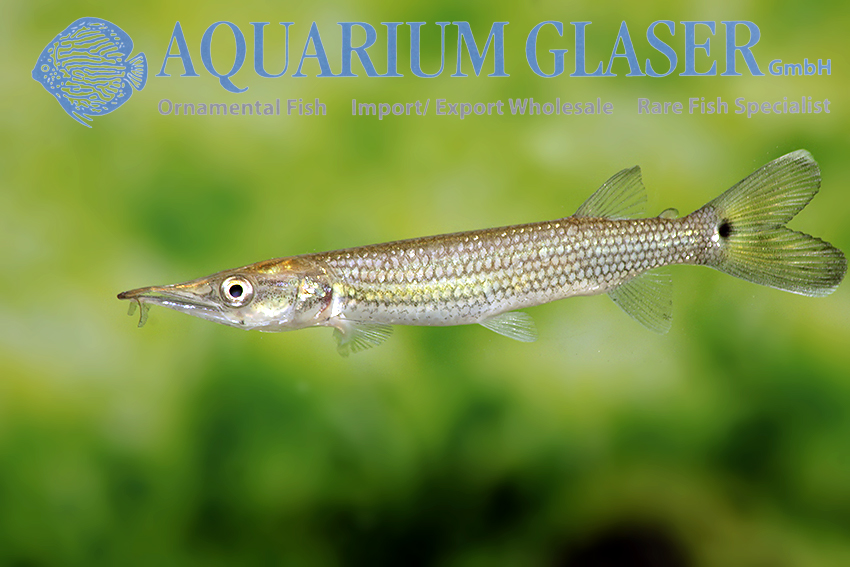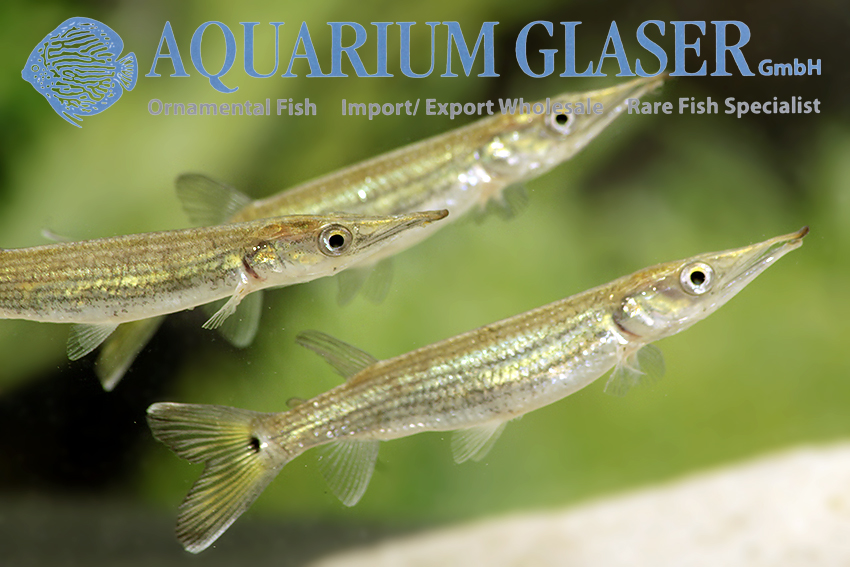This genus of South America gar characins contains only two species that are distiguished basically by the coloration of adult specimens (this means from about 15 cm length on): C. hujeta and C. beani. Both occur in Colombia; C. beani further occurs in Panama and C. hujeta in Venezuela. C. beani has an adult pattern with clearly visible longitudinal stripes which are lacking in C. hujeta. However, almost all traded specimens are bred ones and are usually placed in C. hujeta. Maximum size in both species is about 25-30 cm.
A genus-specific feature of Ctenolucius are the strange skin lappets at the end of the lower jaw. Very similar structures can be found in the West African characins of the genus Hepsetus, which are also very simial in the overall appearance. But while Hepsetus are often found in swamps and have an accessory breathing organ via a primitive lung, Ctenolucius are usually found in running waters. So it is unlikely that the skin lappets work as a breathing help, at least in Ctenolucius. However, the sense of these skin lappets remains still unknown.
Currently we have very nice, about 5-7 cm long bred Ctenolucius hujeta from Singapore in stock.
For our customers: the fish have code 250501 on our stocklist. Please note that we exclusively supply the wholesale trade.
Text & photos: Frank Schäfer





